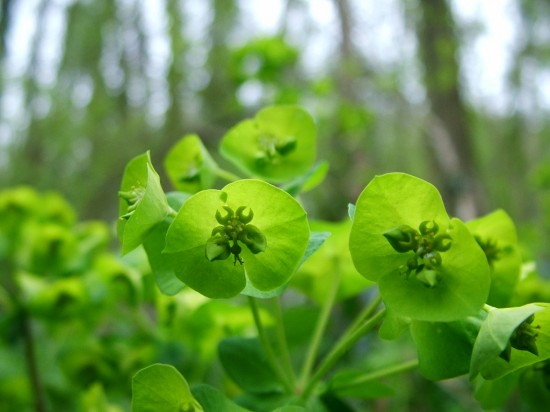The tree fellers have gone, but not without doing considerable harm to the sensitive ecology and shallow archaeology in my opinion, I think that the Forestry Commission needs to be more aware of this threat to ancient and historic woodland when drawing up felling plans and major work. The oak below was 157 years old. 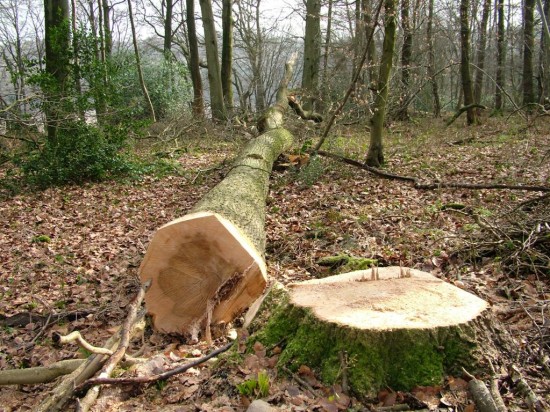
The long awaited spring warmth has been very slow to materialise but the Wildwood is now populated with a variety of specialist Chiltern woodland plants and flowers, some areas are completely transformed. This is especially so with the ‘sea of blue’ created by our bluebells, the Chiltern woodlands contains 20% of the worlds population of bluebells, and as yet there is no sign of the dreaded Spanish variety! Below is an example of a white mutation, whitebells. 
It only this time of year that the casual walker will be aware of just how many wild cherry trees we have in our local woodlands. These cherries grow tall and so their plumes of white blossom contrasts to the many shades of green within the high canopy and are best admired from a distance beyond the woodlands boundary. 
The flowers of Yellow Archangel come into bloom just as the Bluebells are fading, replacing the blue carpet of spring woodland with patches of yellow. An indicator plant of ancient woodlands and hedgerows, Yellow Archangels common name is dead or dummy nettle from its virtue of not stinging. 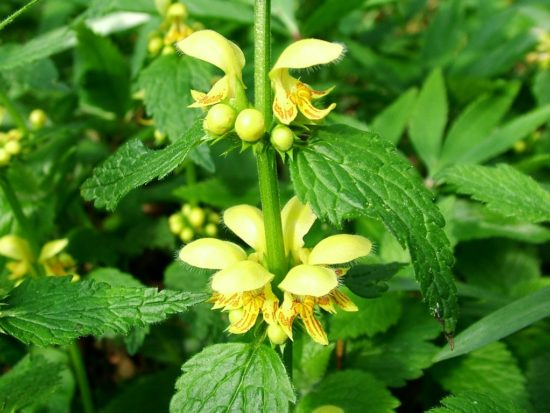
Dog’s mercury is coming up on the woodland floor. It is a flower, but only just. It has tiny insignificant green blossoms that one hardly notices among the thrusting, bright green leaves. But it is a welcome plant, because it begins to give the woods a green appearance long before the leaves break on the trees. It can spread right across the dark layer of leaf mould on the ground. 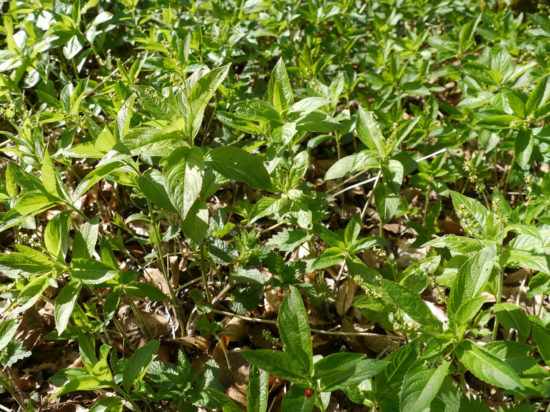
Wood sorrel goes by many names in Britain, including Cuckoo’s Meat, Fairy Bells and Wood Sour. The wood sorrel is a member of the Oxalis family, it has shy qualities and for that reason it is said to be a favourite of fairies and other wood sprites. It likes shady places and grows well in woodland along with bluebells, wood anemones and others. It is the most delicate and shy of flowers and many folk will go through life without ever making its’ acquaintance.
Neither the flowers nor the leaves have a smell although the leaves taste pleasantly acidic. They and the flowers can be added to salads, although you shouldn’t add too many leaves as they contain oxalic acid, so people suffering from gout should avoid this plant. If you use it in a salad there is no need to add vinegar to a dressing, just use olive oil. 
All the beech trees that grow in the Wildwood are self seeded; self regeneration was a major part of woodland management in the Chilterns, felling was carried out using the selection system and only rarely was replanting undertaken. At this time of year small two leaved beech seedlings are emerging from the rich leaf mould, some of these will eventually replace the mature trees that were felled in February. 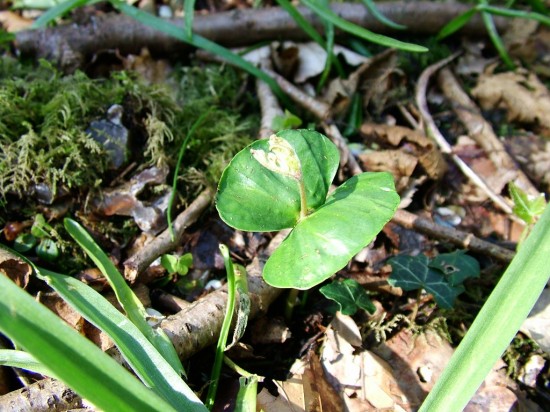
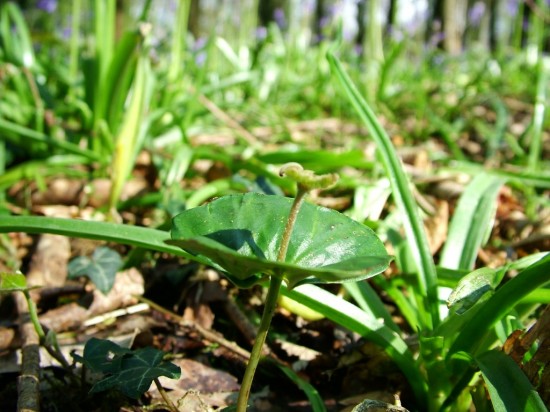
There is one area of ash where wood spurge (Euphorbia Amygdaloidal) pops up and lords it over the shorter plants in the vicinity. It is interesting how certain plants like this colonize just a small area. The rare Green Hellebore is another that occupies a tiny spot, just four square metres, and is often an indicator of charcoal rich areas. Much is claimed for this plant; Mr. Google tells us that, “It is used in magic for healing of mental/emotional afflictions and for banishing and exorcisms. It has been used also for increasing intelligence and for protection and invisibility spells. Apparently the plant was dried and powdered and scattered around the person to be made invisible. Ancient magicians also used hellebore to change the nature of other plants, this is a baneful herb which should never be ingested and you should wear gloves when handling it”. Mind how you go!